The latest Demographia housing affordability survey ranks New Zealand as having one of the most expensive housing markets in the world when median house prices are compared against median household incomes:
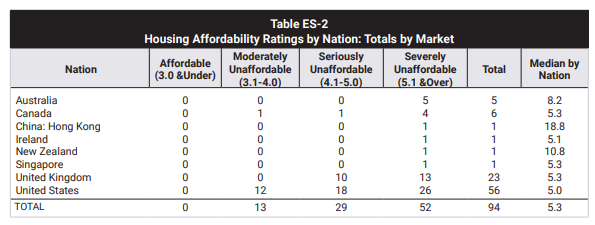
This follows a decade of hyper house price growth across New Zealand.
A new analysis by Interest.co.nz shows that the average size of new homes has shrunk by almost one third over the past decade, while residential construction costs have more than doubled:
“Between the third quarter (Q3) of 2013 and Q3 this year, the average floor area of new dwellings consented declined from 195 square metres (sqm) to 136 sqm, making new homes 30% smaller on average than they were 10 years ago”:
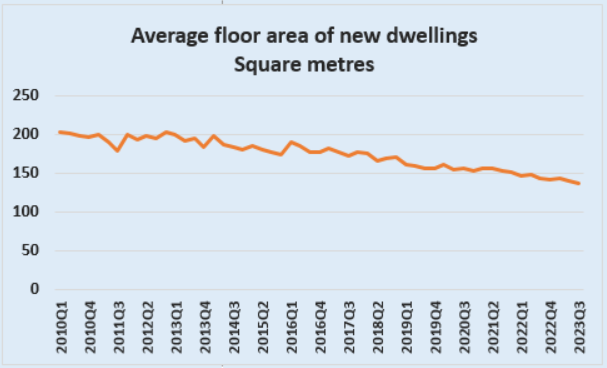
“Over the same period, the estimated average construction cost for newly consented dwellings (excluding the cost of land), increased from $1598 per sqm, to $3225/sqm, up 102%”.
“The combination of smaller floor areas and higher construction costs, meant the average build cost for newly consented dwellings increased from $311,945 in Q3 2013 to $439,308 in Q3 2023, up $127,363 (41%)”.
“The shift to smaller homes has mainly been caused by a move away from stand alone homes to multi-unit dwellings such as apartments, terrace houses and home units”.
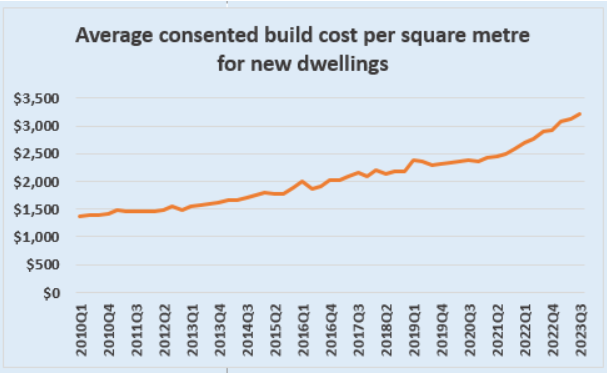
Australia has experienced a different form of housing ‘shrinkflation’.
According to the Australian Bureau of Statistics (ABS), “the average site area of new houses in Australian capital cities has decreased by 13% (64 square metres) over the last ten years, from 496 square metres in 2012 to 432 square metres in 2021”:
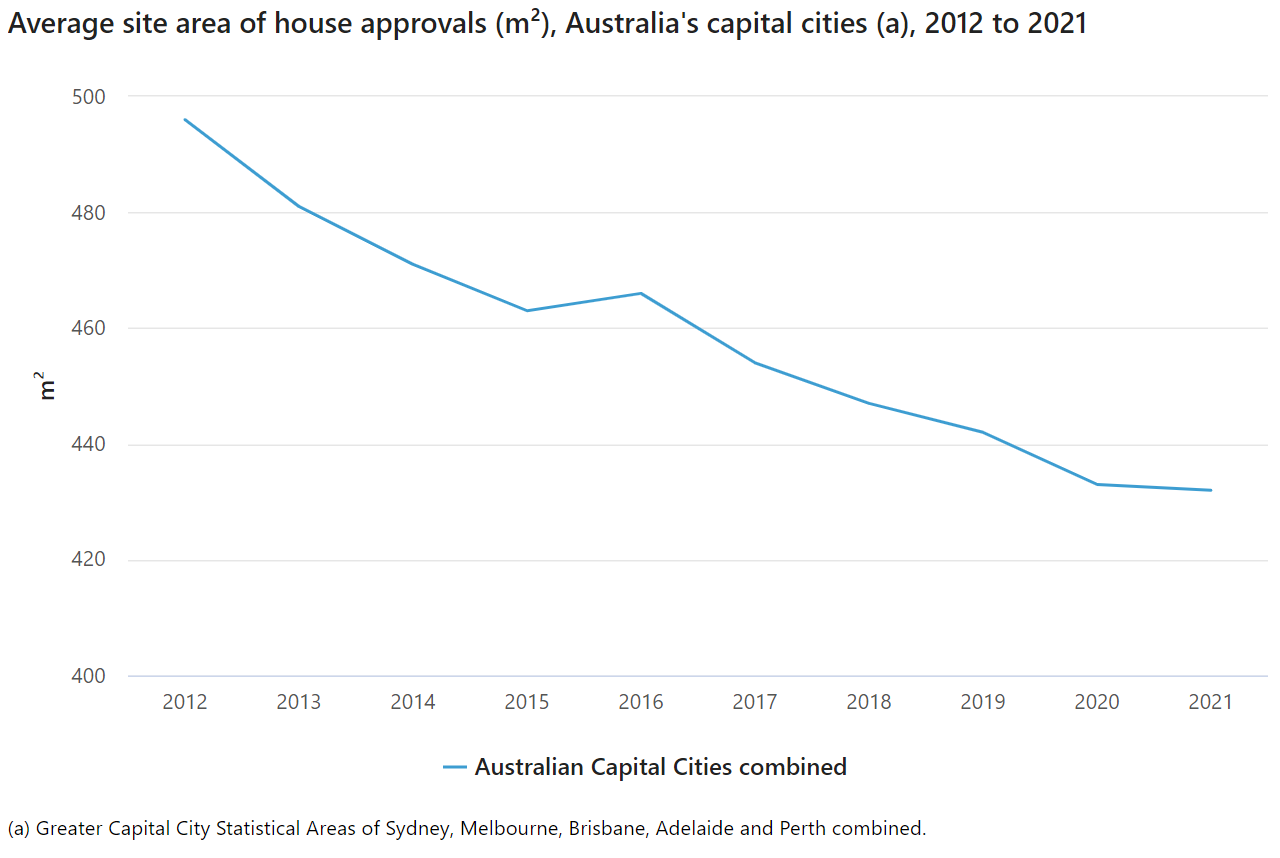
However, the floor area of new homes has only shrunk marginally.
“In 2012, the average floor area was 245 square metres and in 2021 the average was 242 square metres, a decrease of three square metres (-1%) over 10 years”, according to the ABS:
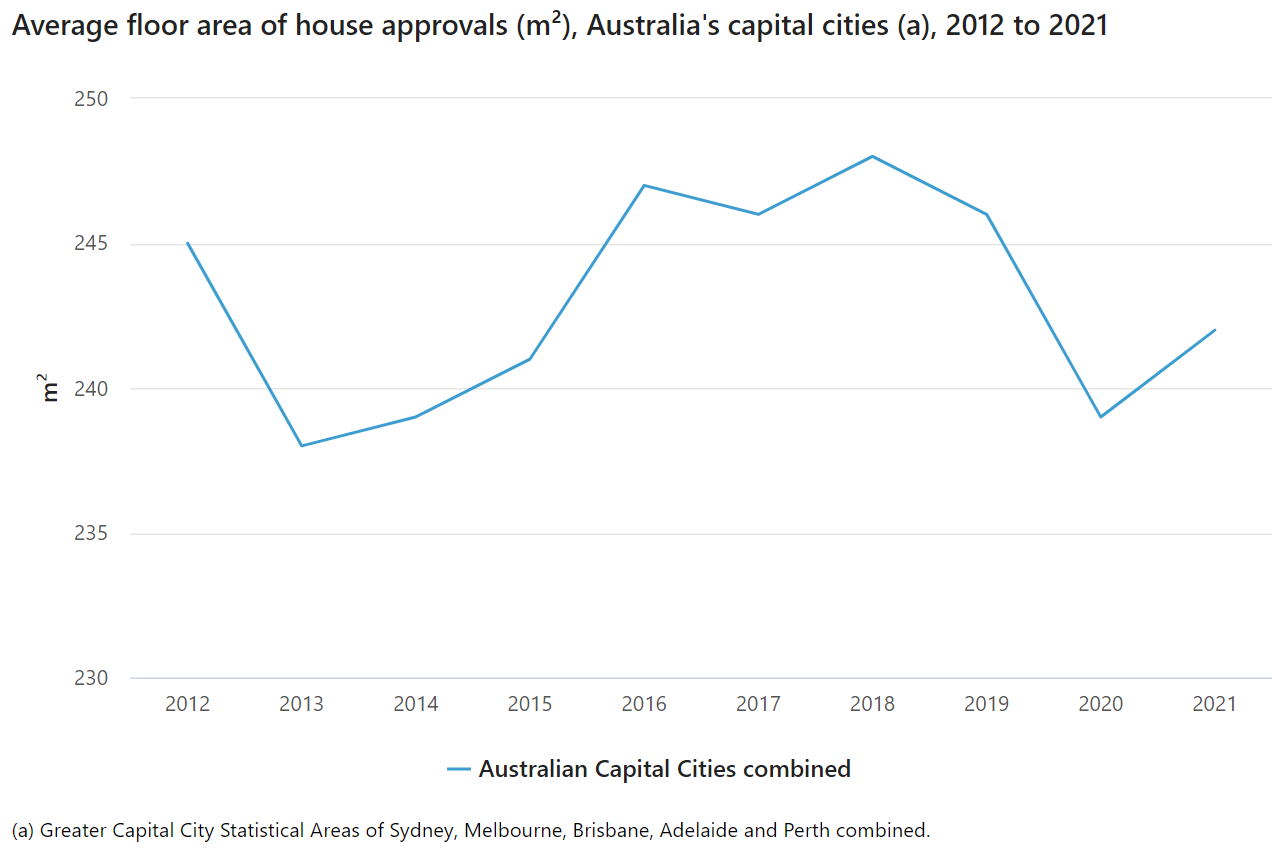
Nevertheless, housing shrinkflation is inevitable so long as both nations’ populations continue to grow rapidly via net overseas migration.
Ongoing strong population growth will necessarily push residents to live in denser and more expensive housing.
Existing suburbs will be bulldozed into higher density apartments and town houses, whereas outer suburban lot sizes will continue to shrink.

